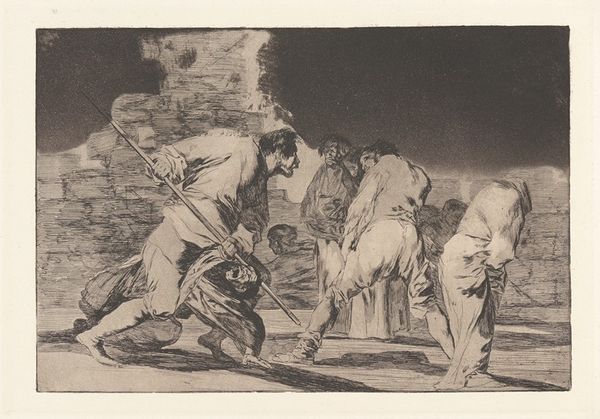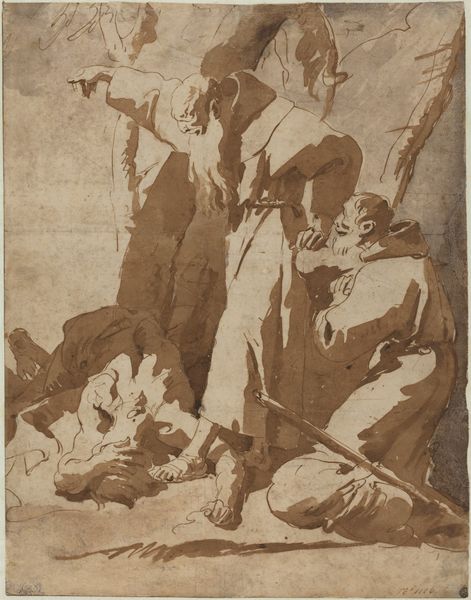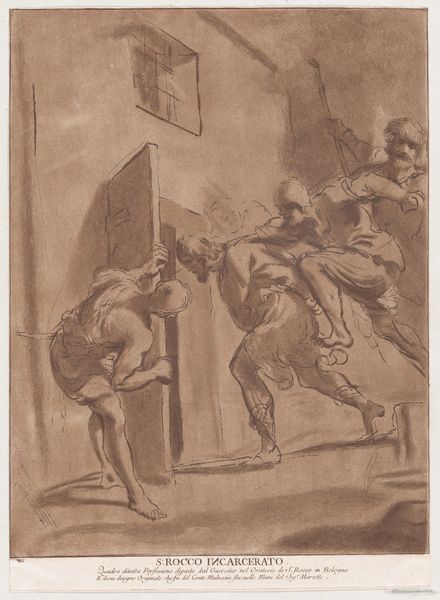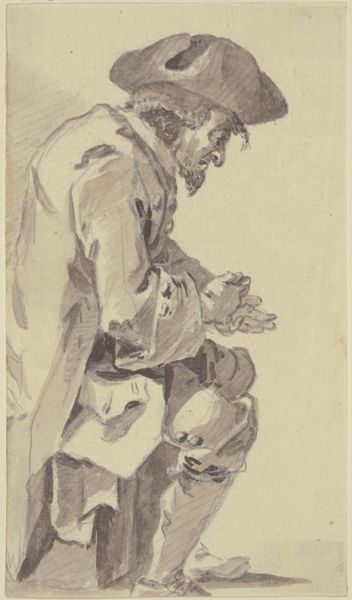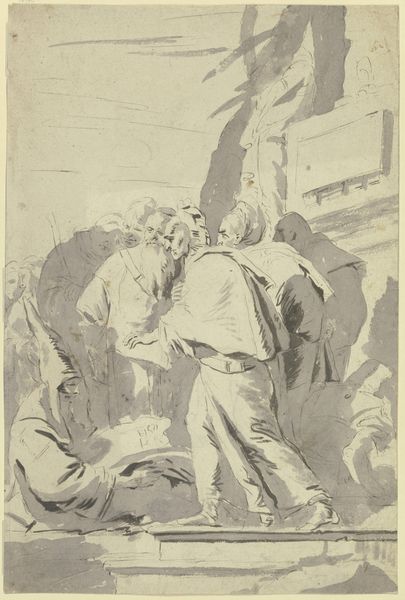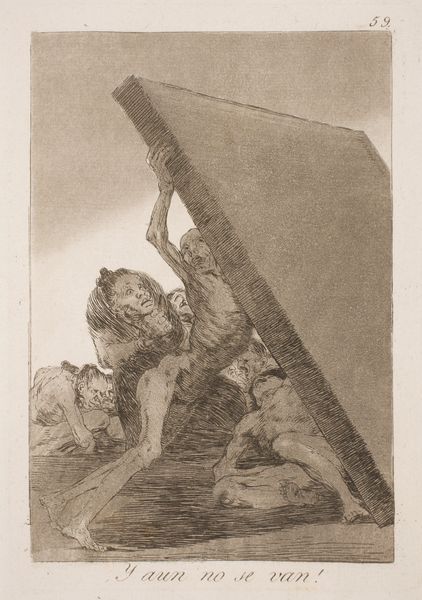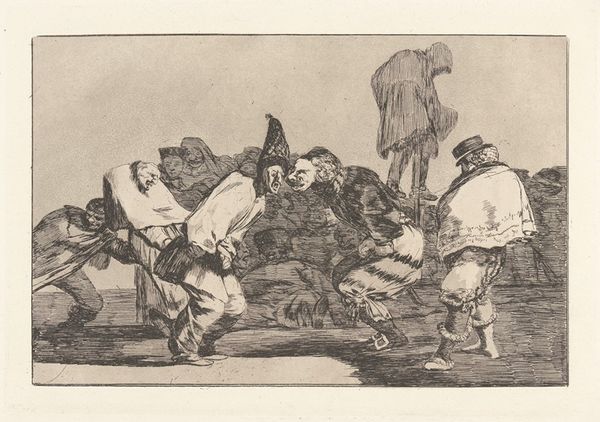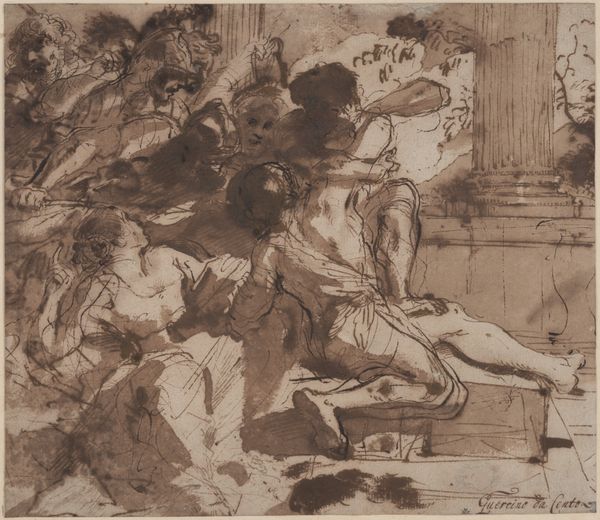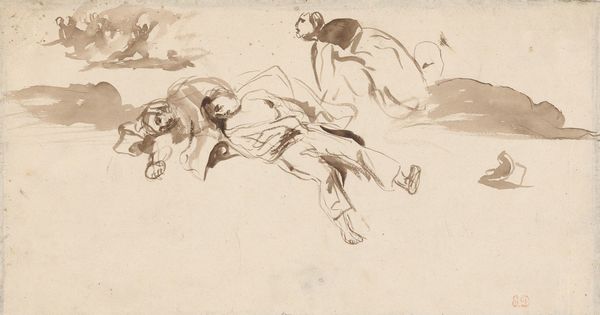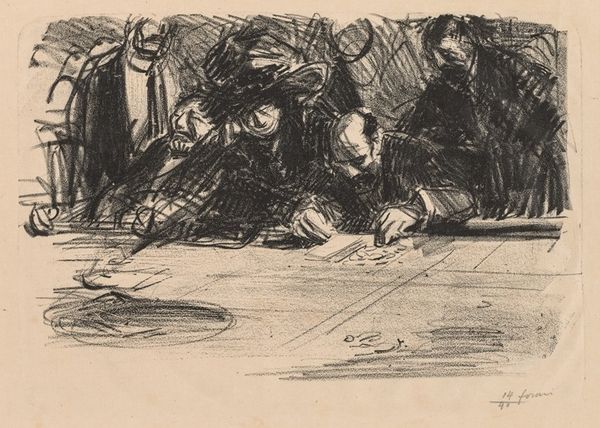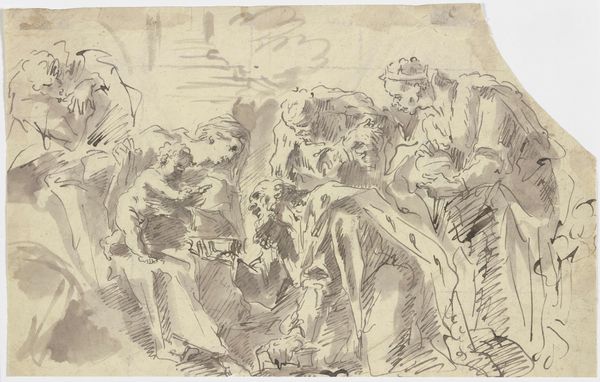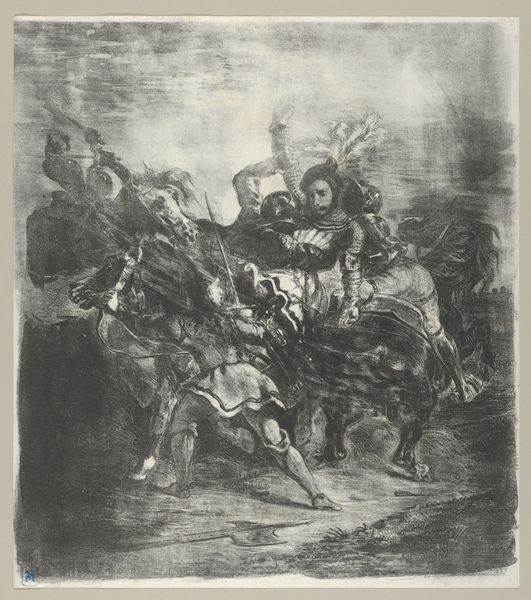
Three Men Carrying a Wounded Soldier, from the Images of Spain, Album F 1812 - 1820
0:00
0:00
drawing, print, paper, ink, chalk, pen
#
drawing
#
narrative-art
# print
#
charcoal drawing
#
figuration
#
paper
#
ink
#
pencil drawing
#
romanticism
#
chalk
#
pen
#
history-painting
#
academic-art
Dimensions: 202 × 141 mm
Copyright: Public Domain
Curator: Here we have "Three Men Carrying a Wounded Soldier," an ink, chalk, pen, and wash drawing by Francisco de Goya, created between 1812 and 1820, now residing here at the Art Institute of Chicago. Editor: Immediately striking is the somber mood. The monochrome palette intensifies the gravity of the scene, focusing our attention on the suffering and burden these figures bear. There's a weight to it that's both visual and emotional. Curator: Absolutely. It’s from Goya’s “Images of Spain” album, created during and after the Peninsular War. He aimed to depict not the glorious battles, but the war’s impact on civilians and the atrocities committed. Think of it as a raw commentary on conflict, differing from conventional patriotic art. Editor: So it's a visual denunciation of war, not just a depiction? What do we know about how he wanted audiences to receive the imagery? Is it aimed to critique institutions, norms around male heroics or just convey despair and its emotional consequences? Curator: I think all of that comes into play, actually. Art historically we understand that Goya made these images reflecting back on socio-political dimensions in the Napoleonic era. They show figures burdened—both literally and metaphorically—by the conflict, stripping bare the ideals of warfare and of empire. The faces are obscured, universalizing the suffering. Even without glorifying details, these drawings communicate so many aspects of this experience and its significance in our contemporary historical landscape. Editor: The ambiguity actually amplifies that sense of universal suffering you described, particularly, in relation to how the image situates this kind of male labor. Are these civilian men? Soldiers? And what’s their relationship to the wounded man? This speaks to how conflict disrupts social orders, demanding the kind of labor from people for which they're probably neither equipped nor prepared. Curator: Indeed. It transcends nationalistic sentiment, questioning the human cost of war across different segments of the population, as well as its ethics. He captured intimate moments of devastation; this, specifically, feels like a funerary procession or lamentation scene, in that their pain is collective. Editor: Knowing the context infuses even more meaning. The way Goya renders the strain in their bodies, the anonymity of their faces, emphasizes the shared trauma rather than individual stories. Curator: Precisely. It speaks to enduring issues of war, and displacement, still resonating in today's conversations around conflict. Editor: That focus shifts the narrative to these social costs and offers us an impactful message. Curator: A poignant reminder of art’s power to bear witness.
Comments
No comments
Be the first to comment and join the conversation on the ultimate creative platform.
